Boeing B-17 Flying Fortress, 42-37985 at Rinneanna, Clare
On December 18th, 1943, at about 12:40 in the afternoon, a four engine aircraft made an unannounced landing at Rinneanna Airport in County Clare. The Irish Army force at the airport quickly met the aircraft and made contact with its crew.
The aircraft was a Boeing B-17G Flying Fortress and on board were ten airmen of the United States Army Air Forces. The names and serial numbers of the crew members were recorded by the Irish army.
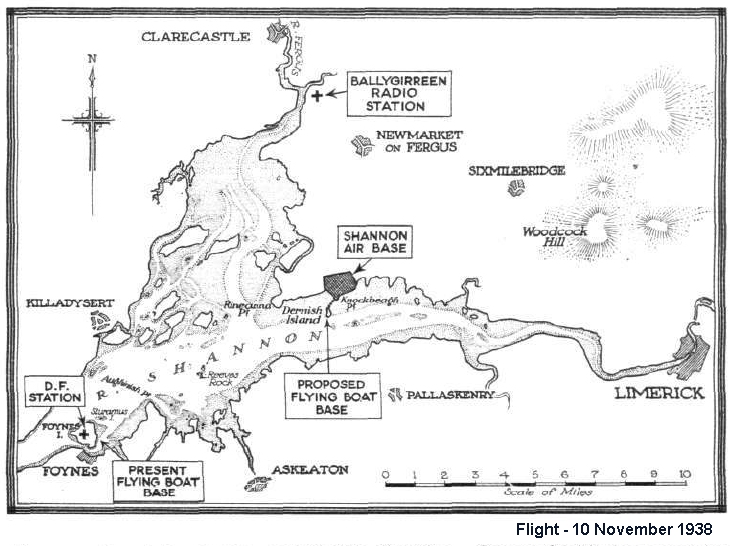 The map
shown is from a 1938 copy of the British magazine, Flight.
Theirs was the fifth American aircraft to have to make a landing
at the airport during the war. The Irish government had decided
it was not worth the risk of interning American airmen so they
were given all possible assistance to depart including fuel and
accommodation for the night so that they would be rested for a
departure the following day.
The map
shown is from a 1938 copy of the British magazine, Flight.
Theirs was the fifth American aircraft to have to make a landing
at the airport during the war. The Irish government had decided
it was not worth the risk of interning American airmen so they
were given all possible assistance to depart including fuel and
accommodation for the night so that they would be rested for a
departure the following day.
And so on 19th December they departed for Northern Ireland and eventually made their way to the UK. They were posted to the 1st Combat Crew Replacement Center, based at Bovingdon. Very quickly then, they were posted to the 379th Bomb Group where they appear on the daily orders of January 13th, 1944. They were immediately assigned to the 527th Bomb Squadron within that group.
On the 26th of December 1943, an officer of the Irish Army's
8th Infantry Brigade based at the airfield filed the following
official report to the Officer Commanding the Armies Southern
Command Intelligence section.:
Flying Fortress – 237985.
Sir,
Further to my ‘phone conversation of Saturday, 18th inst. Re
above, I now make the following formal report.
At 12.44 hours on Saturday 18th inst. One American 4-engined
(Fortress) plane, landed on this Aerodrome.
It had passed over the ‘Drome in a northerly direction at
11.53 hours.
The crew consisting of 4 Officers and 6 N.C.O.’s were as
listed on the Annex hereto.
The plane appeared undamaged. Cause of landing was (a) foul
weather, (b) fuel shortage.
A guard was placed on the plane and the crew was escorted to
the Officers and N.C.O.’s Mess respectively, where they were
provided with refreshments.
The officer in charge declined to state their starting point,
but admitted the plane was being ferried to Prestwick,
England.
There were thirteen .5 machine guns mounted on board, sealed
and covered. A belt of Ammunition was with each.
One member of the crew remained on board at all times.
On the authorisation of G.2., G.H.Q. the Officer in charge was
allowed to ‘phone Col. Hathaway, American Military Attaché.
Mr. Coulter, vice-consul at Foynes visited the members of the
crew at 17.00 hours.
Accommodation was provided at this Post for all ranks.
Authorisation for the plane to clear was given on Saturday but
owing to weather conditions the plane was unable to lease
until 15.47 hours on Sunday. Four hundred gallons of Aero
Petrol was issued to the Plane.
As reported above, 2/Lt Rossberg did not tell the Irish officers where his flight had begun but the diary of one of the men, Thurman Smotherman, and a book published in 1993 by another crew member, George Bennett would confirm that they had been flying from Gander in Newfoundland. Their destination was indeed Prestwick but the weather there had caused them to turn back and in the ensuing search for a further landing field in Northern Ireland, they found themselves over Rinneanna and landed. The account from each of the two men can be found below in their biographies.
Disaster would befall most of the ten men on February 8th, 1944 when they were shot down over France on a bombing mission to Frankfurt. 2/Lt Virgil J Gerth did not fly any combat missions with 2/Lt Rossberg. For the February 8th mission, Rossberg was assigned 2/Lt James B Dougherty, who was killed in the fighting of 8th February. This may have been only their third combat mission with the 527th Bomb Squadron. The ball turret gunner John S Chidder was unable to fly on that date due to a burst ear drum, and his place was taken by a S/Sgt Edward P Dugan from Indiana. Edward Dugan would end up taken prisoner. On that fateful day in 1944, 2/Lt's Rossberg and Bauer were flying B-17G 42-39782, an aircraft that carried the nose art "'Pistol Packin' Mama". The events of that day are described on the French Website of the "SOMMME AVIATION 39-45". While the page is in French, Google Translate can give a reasonable English Translation.
Since the Irish Army on this occasion recorded the mens names along with their serial numbers, it was relatively easy to verify their details by using available resources such as the US National Archives, the American Battle Monuments Commission and genealogy sources.
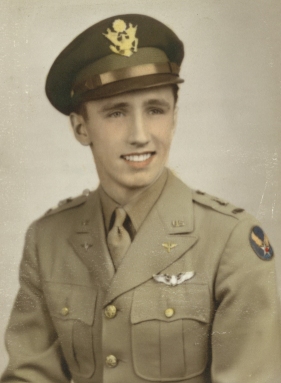
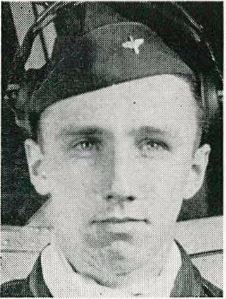
2nd/Lt Herbert D ROSSBERG O-804509
Herbert was the son of German born parents, Catherine and
Herbert B Rossberg of Camillus, New York state. He attended
college before the war in Canada, studying at St Micheal's
College in the University of Toronto. The college maintains a memorial
page for him and other students who died during the war.
He undertook basic training at Walnut Ridge flying school during
1943 where he appears in the class book. He completed his
training as a pilot at Freeman Army Field, Seymour, Indiana. He
was killed in action on February 8th 1944, commanding 'Pistol
Packin' Mama'. His co-pilot, 2/Lt Bauer, recorded that Herbert
been hit while still in the cockpit and had given the order to
bail out. 2/Lt's Bauer and Kupsick left the aircraft before him
and thus were not sure of his fate. Sgt's Bennett and Atkinson
however were certain that everyone was gone from the flight deck
prior to their having left the stricken bomber. His remains were
recovered and now are buried in the Ardennes American War
Cemetery run by the American Battle Monuments Commission near
Leige, Belgium. They were initialy buried on 11th February 1944
by German personnel in the British Commonwealth War Cemetery at
Roye at 12:00 hrs. It would have been after the war that his
parents would have been given the option of his remains being
returned to the USA for burial or to have him remain buried in
Europe.
The US Veterans of Foreign War (VFW) named their Post 8664 after
Herbert Rossberg,
George Bennett in his book remembered his former pilot as
follows: Our pilot was Second Lieutenant Herbert D. Rossberg
from Syracuse, New York. He was about 21 and a serious young
man. Considering the amount of training he had had, he was a
good pilot with a strong desire to get the job done.
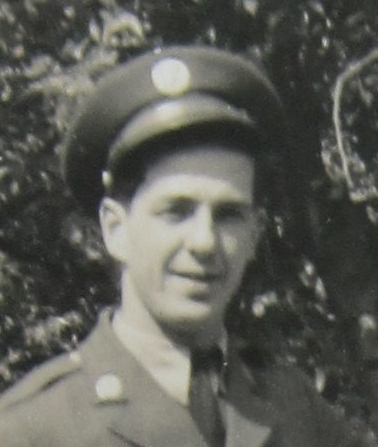
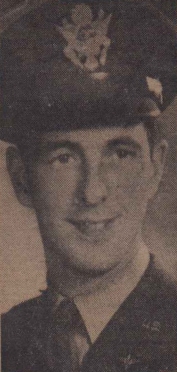
2nd/Lt Matthew J BAUER O-688731
Matthew was born in 1920 in Camden, New Jersey to Matthew and
Agnes Bauer. An announcement in his local paper in 1944 about
his being missing stated: "He enlisted in December 1941, and
received his wings July, 1943, at Lubeck Army Air Field,
Texas. He graduated as a ground crew mechanic at Fort Devens,
Mass., before becoming an air cadet. He attended Camden
Catholic High School and was employed at Campbell Soup Company
for five years. " He survived the February 8th shoot down,
being taken prisoner after landing by parachute. Travelled home
in June 1945 with a group of other liberated airmen on the SS
Santa Paula, sailing into New York. He was married to Mary E
Bauer and they lived in Fairview, New Jersey. He passed away in
1979. His was recalled by George Bennett as follows in his
book, Shot Down: "The copilot was Second Lieutenant
Matthew J. Bauer from New Jersey. He was also about 21 and a
happy guy with a great sense of humor. Life was fun for him.
He was always quick to whip out pictures of his wife and tell
us about her.".
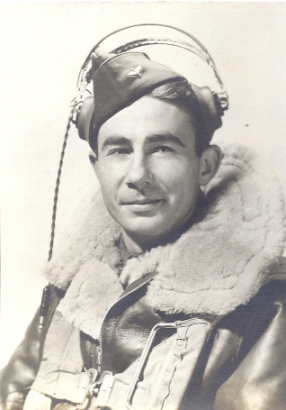
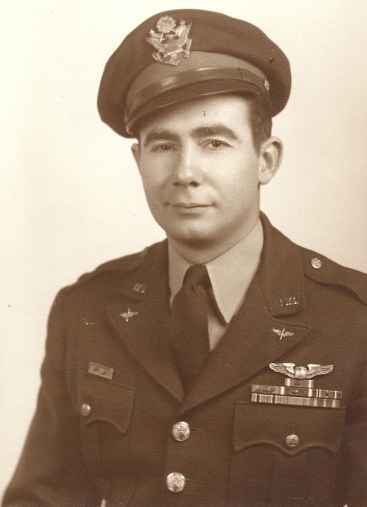
2nd/Lt Virgil J GERTH O-746574
Virgil came from Cabery, Ford County, Illinois. His parents were
Joseph Frank and Anna Elizabeth Gerth. The 1940 census records
him as being a painter and living with his sister and widowed
mother. He enlisted in Illinois into the Army Air Corps in April
1942. Virgil was not part of Rossberg's crew on February 8th
1944, so he was spared being shot down. On the day after his
crew mates were shot down, he wrote home to his brother.
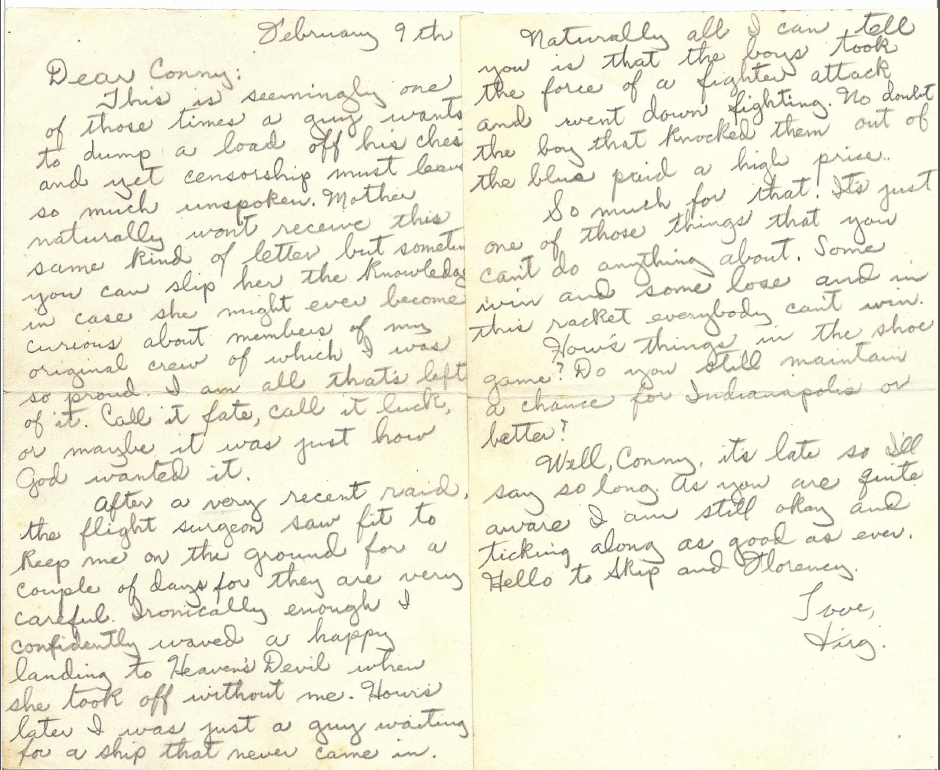
This was a short lived reprieve for he was shot down on 13th May 1944 while flying as bombardier with a different crew. He was made POW then along with all his new crew mates when their aircraft, B-17 42-31997, was hit near Beldringe, Odensee. His pilot brought their damaged aircraft in for an emergency landing. His parents subsequently received notification from the American and Red Cross authorities of their sons captivity, an example document shown below.
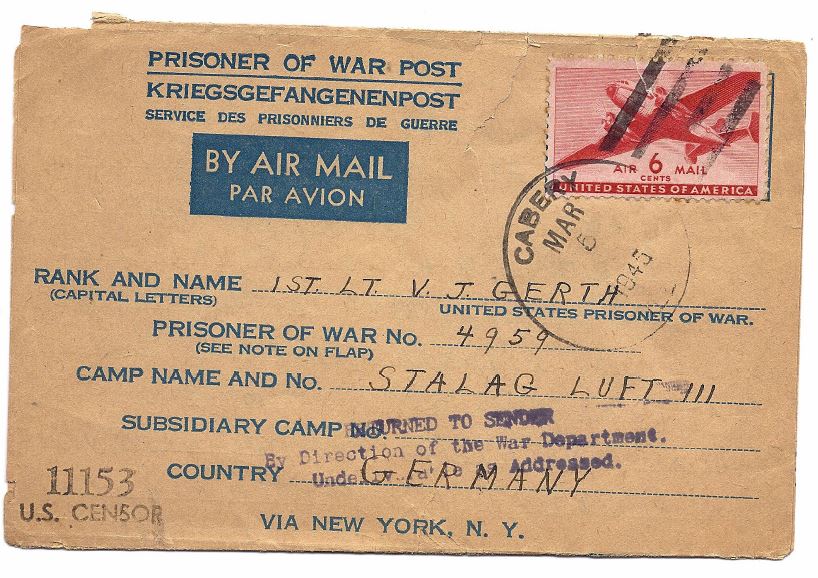
After the war, he married Dorothy Diggle and they lived in Kanakee, Illinois, until his death in 1970 in Hennepin County, Minnesota. His wife Dorothy passed away in July 2006 in Kankakee. His nephew Paul who made contact with his photos explained that he Virgil and Dorothy never had a family of their own. Throughout the 1950's and 1960's he appears in journals and directories as a manger working for General Mills, Inc., Kankakee, Illinois"
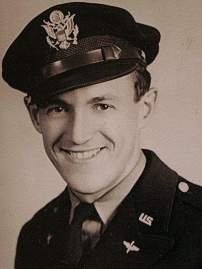
2nd/Lt John A KUPSICK O-685654
The son of Genevieve and John J Kupsick from Great Falls,
Montana. He enlisted in May 1942, having worked for a time after
finishing High School as a Florist. His role in the crew was
that of Navigator. He received numourous wounds during the
attack and bailout. 2/Lt Kupsick was able to evade capture with
the assistance of local French people, and over the space of the
following few months, in the end being liberated by the
advancing Allied armies. After bailing out, the only men he had
any detail of were Bennett, whom he was visited by and Atkinson.
He was flown back to the UK on 5th September. Thereafter
he was sent back to the United States, arriving on an Air
Transport Command aircraft in Washington DC on September 17th,
1944. John stayed on in the Air Force retiring in the 1960's. In
1999, he had an article published in the journal of the THE AIR
FORCES ESCAPE & EVASION SOCIETY, calling on members to
assist in a campaign to have the US Government recognize the
efforts of evaders. John passed way on 30th January 2013 in
Oregan. He is buried in Arlington National Cemetery.
George Bennett had this to say of Lt Kupsick, "Second Lieutenant John A. Kupsick was our navigator. He was not well known by the enlisted men but seemed to be a very competent individual. He was from Sand Coulee, Montana.". During the 1990's, Kupsick and Bennett were able to make contact with one another.
You can read his escape and evasion report on the US National Archives website by clicking here.

S/Sgt Charles E ATKINSON 15084516
Charles came from Indianapolis, Indiana, born in January 1923
The son of Edna and Enoch Atkinson. Charles and his brother
lived with their mother and their Aunt in the 1940 census, with
the Charles working in a retail store. He was opearting the top
turret of aircraft 42-39782. He was assisted by local French
people and was able to reach the Spanish border on March 29th,
1944. He moved to Gibralter on May 15th and was back in the
United Kingdom on May 18th. His escape and evasion report,
number 651 contains the following factual statements on his
experiences of the 8th February 1944:
We had just crossed the coast when the flaps dropped and
could not be raised electrically. I went back to the radio
room, pulled them up, and was I the bomb bays on my way to my
turret, when fighters hit us. Shells stare exploding all
around me. I reached my turret and the oxygen was out. I could
see smoke pouring out of the right wing. The fighters came in
again and blew off the nose.
The navigator, badly wounded, joined the pilot and co-pilot.
They started to get ready to jump. As I was not on intercom, I
did not know what the score was. I went into the radio room
and saw that BENNETT was leaving. I went back and put on my
chute. The cockpit was empty. I went out through the hose
hatch passing our blood soaked bombardier on the way.
I pulled the ripcord at 20,000 feet because I had been off
oxygen eight minutes, and was so weak that I had had trouble
leaving the ship. There was a bad jerk when the chute opened.
I landed hard on my back in a field near a village. I was
momentarily stunned, and just lay there. People started to run
toward me from every direction. They helped me out of my chute
and mae west. Then I covered my eyes and pointed to the
equipment. They understood and immediately took it off to be
hidden. They had all been shouting “Deutsch? Anglais?
Americain?” When I got round to saying ”Americain” they all
started to kiss me.
I was in no mood for demonstrations of affection so I again
covered my eyes, but this time pointed at myself. One of the
men obviously wanted to help, but was terribly excited and
confused. Finally a woman who seemed calm and collected,
pointed that I should run along a field parallel with a road.
I took her advice. Soon a man started down the road on a
bicycle. I fell flat in the field. He passed me and turned
back. I could now see it was a Frenchman and raised up. He
pointed to a farm house 2 miles across the fields, and said I
would get help there.
I reached the farmhouse without incident and then observed it
for half an hour. There were six men working a threshing
machine, and I finally decided to risk approaching them. In an
evasion lecture I had been told that a good way to get help
was to feign hunger. I did this now, although I was much too
excited to eat, and I was immediately taken into the kitchen.
Once inside I took out my language card an dasked for civilian
clothing. I also found out I was in Northern France.
As my leg was badly swollen, they put me to bed while they
collected clothes for me. I was brought a suit, sweater, shows
and hat. I had to keep my OD shirt, but removed all the
insignia. Then I was taken out and hidden in the barn. Two
hours later I received a note, written in English, saying that
I was not to worry as I was in safe hands, and would be moved
to a proper hiding place that night. After dinner a man came
for me, as promised, and from there on the rest of my journey
was arranged.
He was hidden at another house until March 15th when he was taken to Paris. Hereafter his experiences are refered out to Sgt Bennetts report. He travelled south in the company of Sgt Bennett. Atkinson in his reports was convinced that crew members had bailed out except for the Bombardier who had been killed by the fighter attack. He also had learned that 2/Lt Kupsick was safe and hidden near by.
You can read his escape and evasion report on the US National Archives website by clicking here.
The Indianapolis Star newspaper published the news report displayed above on Sunday, February 27, 1944.
Better news was to be found during the summer when on July 13th
the newspaper reported: Two Indianapolis veterans of the
European campaign are being processed at an Army Air Forces
redistribution station in Miami Beach, Fla. They are technical
Sergeant Charles E. Atkinson, 137 West Market Street, gunner
on a B-17 who has received the purple heart, and First
Lieutenant Gerald M Palmer, B-17 navigator, son of Mr. and
Mrs. O M Palmer, 1453 North New Jersey street.
Charles passed away in March 1993 in Franklin, Ohio. His
veterans grave stone records service during the Korean war also.
George Bennett rather humorously recorded him as follows:
"Staff Sergeant Charles E. Atkinson, our flight engineer, was
a real character. His favorite pastime was gambling with
cards. He would rather play poker than eat and often made that
choice. Many times I would go to bed with the noise of a card
game in the background and wake up in the morning with it
still going on. Another of Charley’s joys was having plenty to
drink. He could really hold his liquor and, on many occasions,
demonstrated his fortitude. My best recollection of this is
when we were forced to land in free Ireland. He got in a
drinking contest with an Irish sergeant. You could always
count on his doing his job; you could count even more that he
would not volunteer for anything additional. He is
particularly remembered for his clever, and almost always
successful, efforts to avoid exercise. He much preferred to
relax rather than build up a sweat. However, this attitude
never affected his specific aircraft duties. When the engines
began to rotate, you could count on Charley being totally
reliable." After their return to the United States,
George and Charles lost contact and at the time that the book
was published George did not know Charles whereabouts.
S/Sgt Albert F PAPLASKAS 11087519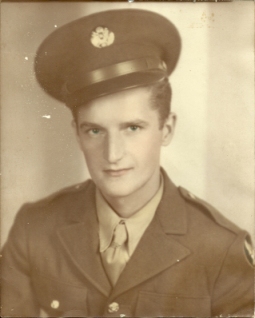
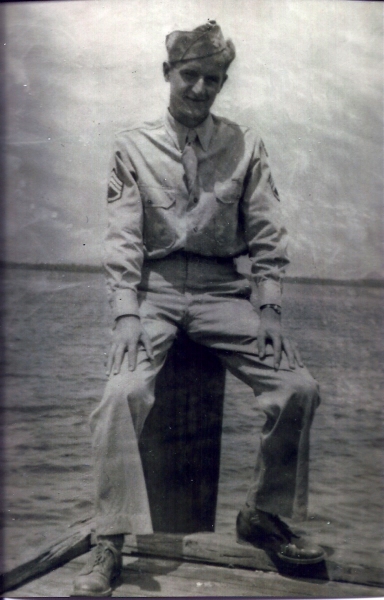
Albert was born in 1921 in Methuen, Massachusetts to Veronica
and Benedict Paplaskas, immigrants from Lithuania. In 1940, aged
18, he was living at home with his parents and siblings and
working as an operator at a local woolen mill. His brothers also
served during the war, Paul with the Navy in the pacific and
Alphonse with the infantry. Albert operated one of the B-17's
waist gun positions along with Smotherman. Albert was killed in
the shoot down of February 8th, his body being found in the area
of the crash. He is buried now in the Ardennes American War
Cemetery. He too was buried on 11th February 1944 by German
personnel in the British Commonwealth War Cemetery at Roye at
12:00 hrs bu tat that time they had been unable to identify him.
Investigations after the war by American personnel would have
determined his remains were there.
The following telegrams were received by his parents during
1944 informing them of their sons loss. In addition, his parents
were provided with the following citations--from the town of
Methuen, the State of Massachusetts, the United States, the
Army, and the American Legion. Veronica and Benedict also
received a citation from the Archdiocese of Boston for having
the most sons, four, from St Francis Church serving in the war.
These citations can be seen at the bottom of this webpage, as an
example of memorial effects that families of American war dead
might obtain.
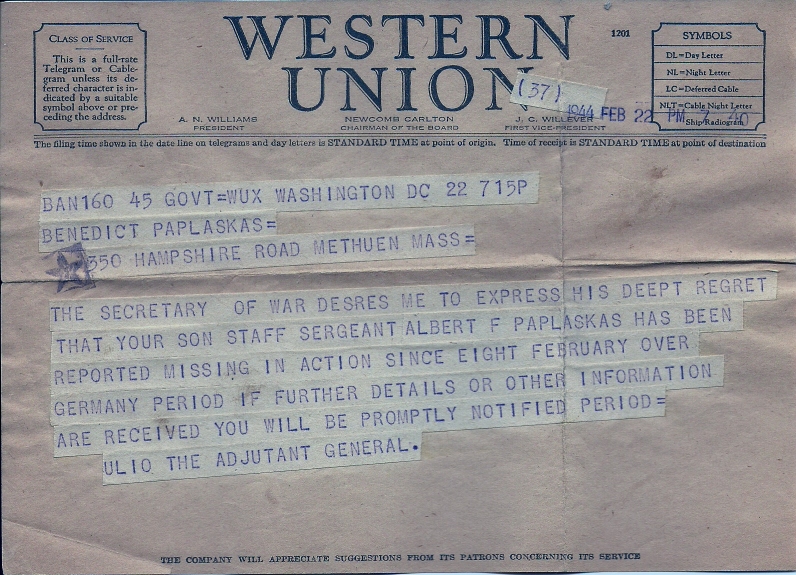
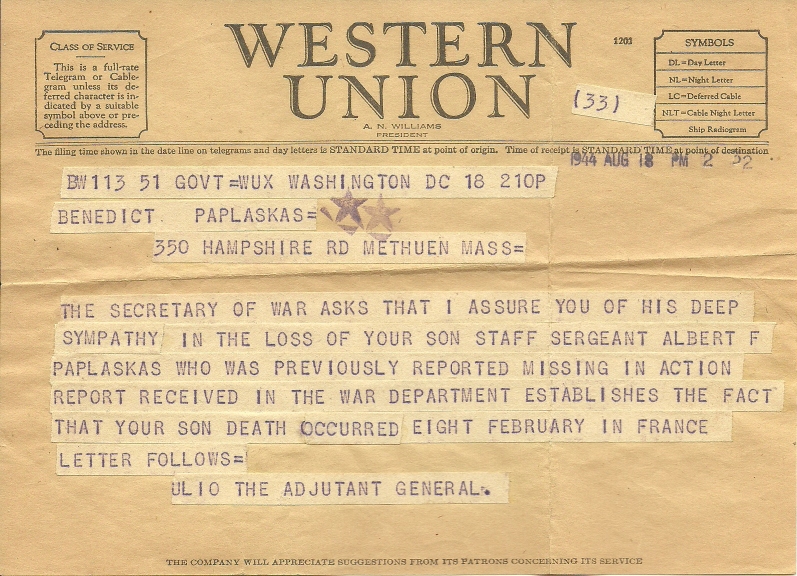
George Bennett wrote of his former crew mate: Staff Sergeant Albert F. Paplaskas was our left waist gunner. Pappy, as we called him, had a personality similar to Charley’s. He really enjoyed the payday poker games. He also liked to sip a bit of the hard stuff during the long sessions. I do not recall ever seeing him inebriated, but, on occasion, he would get pretty happy. Like Charley, Pappy was not one to work up a sweat if it could be avoided. He was very reliable when the engines started turning; indeed, he was a fine young man from Methuen, Massachusetts.
S/Sgt George F BENNETT 15339963
George came from West Virginia and enlisted in December 1942 in
Kentucky. Born in 1924 in Wheeling, WV. He was trained as a
radio operator and was among the crew shot down on February 8th,
1944. He however was able to avoid capture and escaped from
France. He remained in the Air Force after the war, training to
be a pilot in 1948-1949. He piloted B-29 Superfortress bombers
during the Korean war, flying 51 missions and later rising to
the rank of Colonel and retiring in 1973 as senior commander at
Ellsworth Air Force Base. He passed away in July 1999 at
Horseshoe Bay, Texas, and is buried in Fort Sam Houston National
Cemetery in Texas.
You can read his escape and evasion report on the US National Archives website by clicking here.
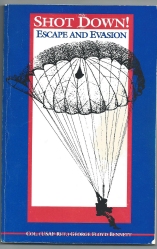 George
published a book in 1991 about his wartime experiences, Shot
Down! Escape and Evasion. His daughter in law very kindly
transcribed the book in 2016 and it contains some wonderful
information, including descriptions of his crew mates. One one
page of the book, George described their arrival in Ireland on
the page relating to his return to London with Charles Atkinson
after their evasion, when they were sent for debriefing: Once
in London, Charley and I felt very much at home. We had spent
ten days there, over Christmas, for an intelligence debriefing
after we had escaped from southern Ireland. We had been forced
to land there after crossing the Atlantic ocean from Gander,
Newfoundland. We had flown for many hours through storms and
encountered strong headwinds that had not been forecasted. By
the time we arrived over land, we were flying on fumes. We
were preparing to bail out when the bombardier sighted an
airfield. It was a small field at Shannon, Ireland"
George
published a book in 1991 about his wartime experiences, Shot
Down! Escape and Evasion. His daughter in law very kindly
transcribed the book in 2016 and it contains some wonderful
information, including descriptions of his crew mates. One one
page of the book, George described their arrival in Ireland on
the page relating to his return to London with Charles Atkinson
after their evasion, when they were sent for debriefing: Once
in London, Charley and I felt very much at home. We had spent
ten days there, over Christmas, for an intelligence debriefing
after we had escaped from southern Ireland. We had been forced
to land there after crossing the Atlantic ocean from Gander,
Newfoundland. We had flown for many hours through storms and
encountered strong headwinds that had not been forecasted. By
the time we arrived over land, we were flying on fumes. We
were preparing to bail out when the bombardier sighted an
airfield. It was a small field at Shannon, Ireland"
He further describes the events of December 18th 1943: Our
crew was inexperienced. The training in the States had been
rushed and was certainly inadequate. Months of scheduled
training was covered in a few weeks and just a few flights.
Our trip from Kearney, Nebraska, to England had been a
hair-raising experience with a forced landing at Shannon,
Ireland. However, that is another story for another time.
After escaping from southern Ireland, we were quickly flown to
London for interrogation and debriefing. We were in London for
ten days.
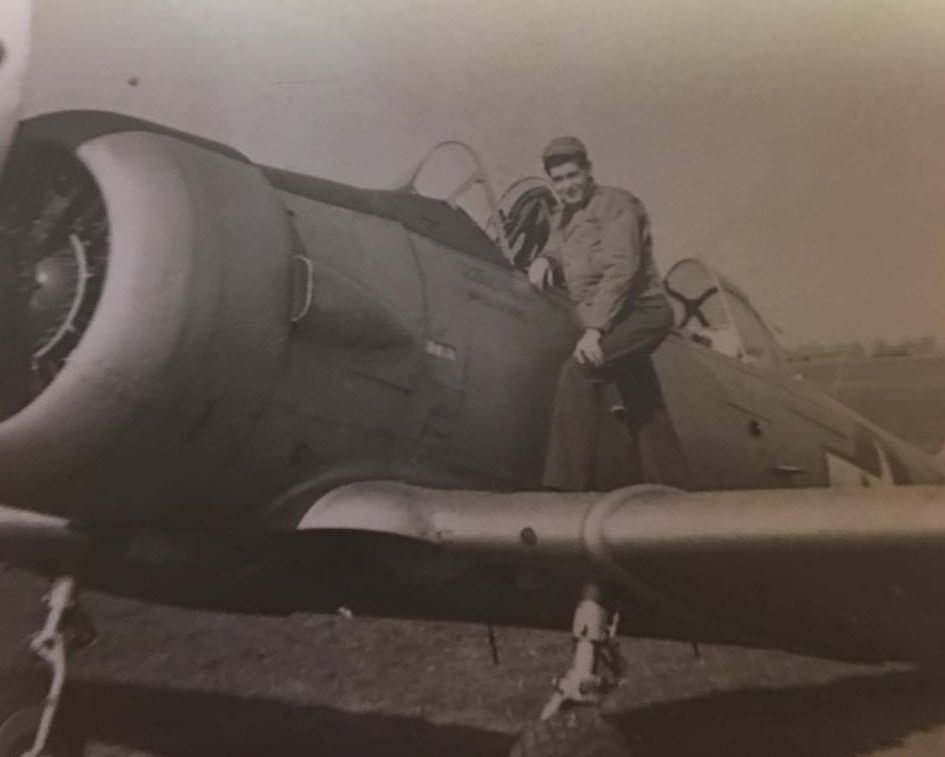
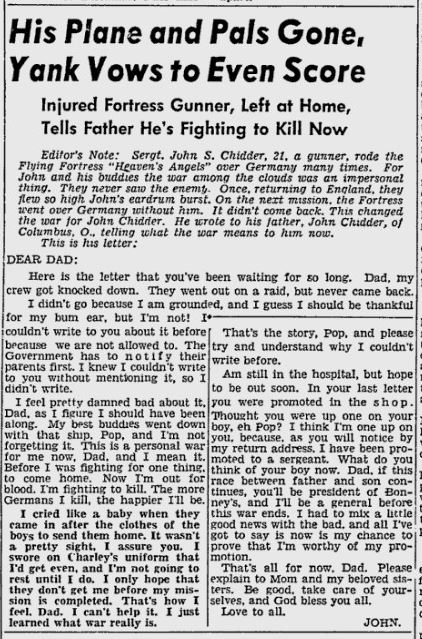
Sgt John S CHIDDER 15336131
John Chidder was from Ohio, and enlisted in Indiana in late
1942. He was the son of Anna and John Chidder, Hungarian
emigrants from Columbus, Ohio. Sgt Chidder was not flying with
the remainder of 2/Lt Rossberg's crew on February 8th and thus
was not shot down. A letter he wrote home to his father after
was published in the Pittsburgh Press newspaper. He is officialy
recorded in Squadron records as having flown two more missions
with the 527th Bomb Squadron on the 18th and 22nd of March 1944
with the crew of 1st Lt Mario L Cornell.
His family have a Silver Star medal which he is understood to
have won on another mission in March 1944 during which his
crew's officers were killed. Sadly the records of the 379th Bomb
Group do not record the details of those he flew with on that
day.
In Sgt Bennett's book Shot Down, he describes Sgt Chidder as
follows: Johnny Chidder, our ball turret gunner, was
not making any move to get up. He had been grounded with a bad
ear after a mission and was DNIF (duty not involving flying).
Johnny was a terrific young man and a real pleasure to be
around but he had his problems with flying machines. He had
been troubled with air sickness on almost every flight since
joining the crew. Johnny’s personality and desire to remain on
the crew kept all of us rooting for him to overcome what we
thought was a temporary problem. He returned to flying after
the ear trouble cleared. (We lost contact with each other
after the war and it was with great joy that I found out on
May 12, 1991, from Jack Kupsick our crew navigator, that
Johnny is living near Carlsbad, New Mexico, with his wife whom
I first met in June 1944. The call from Jack Kupsick was the
first I had heard from him since about 1946. It was a
wonderful surprise.)
John Chidder passed away in January 1997, with an address in
Carlsbad, New Mexico and was buried in Orange, California.
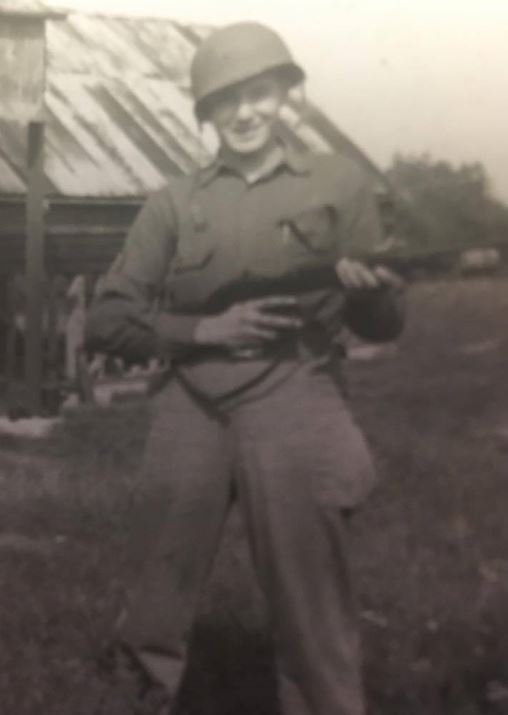
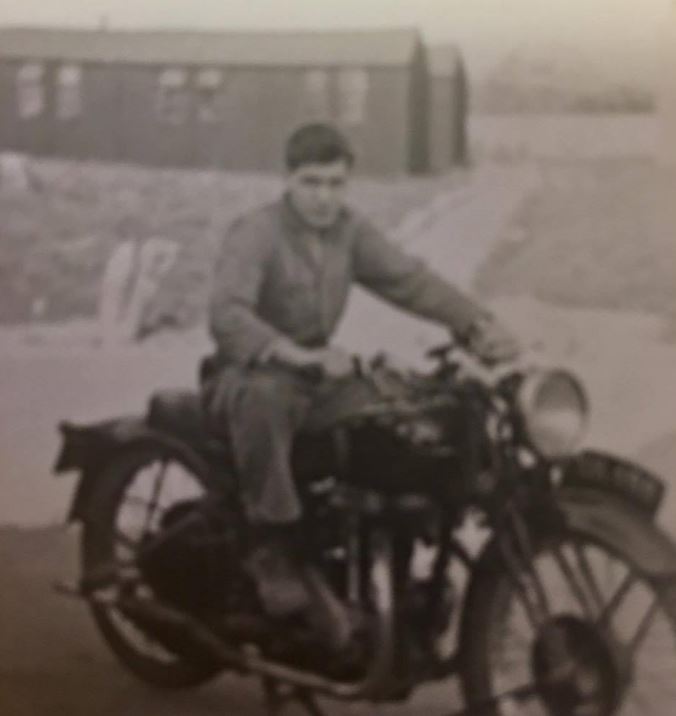
His daughter was able to find the photos of John shown above.
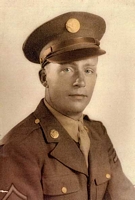
Sgt Thurman P SMOTHERMAN 37417414 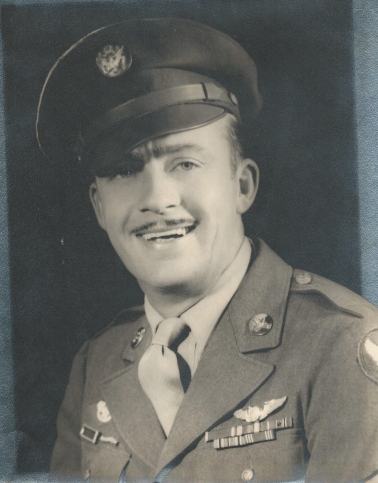
Thurman Smotherman was one of the waist position gunners in the middle of the aircraft. He was one of those shot down on February 8th, 1944 and his biography below is as provided by his loving daughter, Linda. It is based on his wartime diaries and is interesting as it tells us that the men most likely met at Ephrata Army Air Field in Washington, whre the ten were moulded into a combat crew following their individual training.
Thurman was born September 16, 1914 to Marion P. and Mary E. Smotherman at Teresita, Missouri on the family farm. He graduated from Birch Tree High School in 1933. In 1941, he went to St. Louis and entered St Louis School of Aeronautics to learn the basics of aircraft work. After finishing this school, he went to Buffalo, New York to work at Bell Aircraft Corp, where they built the Aerocobra, a fighter plane that was supposed to be the hottest craft built at that time. In December 1941, he came back to St Louis to work at McDonnell Aircraft. He worked there until February 1943, when he was drafted. He got into the Army Air Force possibly because he had experience with aircraft work. He was inducted into the service Feb. 9, 1943 at Jefferson Barracks in St. Louis, MO. After induction, he went to St Petersburg, Florida for basic training.
From there he went to Lowery Field #2 near Denver, Colorado, for nine weeks of training, studying machine guns and turrets. After graduating there, he went to Kingman, Arizona for nine weeks of aerial gunnery training. He graduated from this school a Sgt. and got his wings. From there, he went to Salt Lake City, Utah where he was processed. Then on to Ephrata, Washington, where he was assigned to a heavy bombardment combat crew for overseas duty. He was a 1st Armorer Gunner occupying the right waist gun position. He was to oversee installing of guns before a mission; pull firing pins in bombs in flight to target.
Then the long hop overseas began. On Dec 9, 1943 he was in Gander Lake Newfoundland waiting for suitable weather to begin hop across to Prestwick Scotland. On Dec 17, 1943, they took off just after midnight for the long 2000 mile trip across the North Atlantic. When they arrived over Prestwick Scotland, the field was closed and they couldn’t land. They were directed to another field in Northern Ireland. They encountered another storm and were blown off course and landed in Southern Ireland. They only had a small amount of fuel left when they found this spot to land. They were treated very nice in Ireland. After refueling they took off for Northern Ireland where they spent the night and then headed to Prestwick Scotland and from there to London. He spent month and half in England as base for flying missions, etc.
Note: His diary record their stop off in Ireland as follows: The entry starts on the precededing page: Dec 17th - Took off shortly after midnight for the long trip of about 2000 miles....
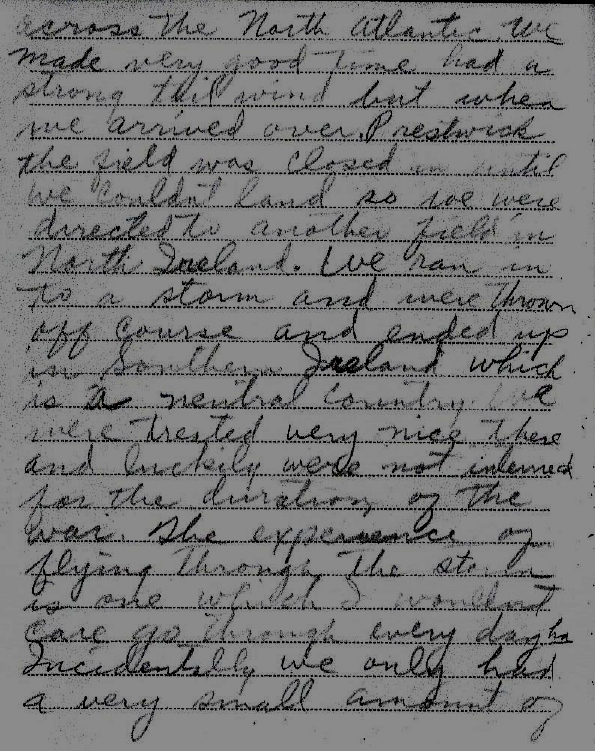
The full entry for the day reads: Dec 17th - Took off shortly
after midnight for the long trip of about 2000 miles across the
North Atlantic. We made very good time. Had a strong tail wind
but when we arrived over Prestwick the field was closed in until
we couldn;t land so we were directed to another field in North
Ireland. We ran into a storm and were thrown off course and
ended up in Southern Ireland which is a neutral country. We were
traeted very nice there and luckily were not interned for the
duration of the war. The experience of flying through the storm
is one which is wouldn't care go through every day. ha
Incidently we only had a very small amount of gas left when we
found a landing ground.
Dec 19th - After refuleing we took off again landing this time
ins North Ireland. We stayed all night there and next day flew
on over to Prestwick then on to London
He was in a plane named “Pistol Packin Mama” on Feb 8, 1944, when he was shot down on mission to Frankfurt, Germany by Goerings Abbyville Kids (ace German pilots) in Focke Wolfe 190’s. Three engines were shot out so he bailed out at 25,000 feet and landed in a little town in France by the name of Nayon. France was still occupied by the Germans so he was captured soon after landing. He was only slightly wounded with cut above his eye which was bleeding quite a bit. Seven out of a ten man crew got out alive. He and the tail gunner were taken prisoner and eventually wound up in a POW camp in or near Hydeekrug, Lithuwania in East Prussia; Stalag Luft 6—this was the best POW camp he was in. In Stalag 6, the prisoners had some say about how things were run within the camp. The American Red Cross parcels came through pretty regularly and the Germans gave him some food—something called black bread. There was occasionally meat, generally horse meat.
He was moved from there by boat and boxcar to Stalag 4 near Stetten, Germany. This move was through the Baltic Sea which was full of mines. He was packed in the hold of an old German tanker 12 feet below the water line for 48 hours without food or water. Then he was loaded into boxcar with only sitting and standing room. Then he was herded by dogs and guards with rifles and bayonets for about half a mile up the hill to Stalag 4. Any ideas he had about escaping into the woods along side of him was quickly forgotten, because he could see German soldiers with machine guns just hoping someone would make a run for it into the woods.
In Stalag 4, the Germans took over completely and things were much worse. Prisoners had less of everything, including Red Cross food parcels. From here prisoners were moved by boxcar to Nueremburg, and the food situation was getting bad. No food at all from the Germans and the Red Cross had been delayed for quite a while. Things were looking really bad when the Red Cross parcels came through from somewhere in Sweden or Switzerland. He had lost considerable weight and was about ready to make a run for it…better to be shot than starve.
He left Nuremberg on foot. From the news he had received, he thought the end of the war must be near. He thought they were heading for the Bavarian Alps. At Moosebury, Bavaria, they were cut off by Patton’s 3rd Army and liberated. From then on they he had plenty to eat and a chance to clean up. He was moved out by Army trucks to Camp Lucky Strike where he was deloused and loaded on a ship and headed for the good old U.S.A. He made the trip home in a 400 ft Liberty ship in about 18 days. The Statue of Liberty in New York Harbor looked mighty good. He felt that he had been through hell and made it back safely. He didn’t consider himself a very religious man, but many times his belief in God helped him through.
Several years after he got home, he bought the family home at Teresita, MO and lived there with his wife, Josephine and three children. He worked at the Smith Flooring Company in Mountain View, MO for 20 years and farmed. He spent the remainder of his life on the family farm until his death in July 1995 at the age of 80. His wife Josephine passed away in October 2015 at the age of 92. The farm is still in the family and now belongs to his daughter.
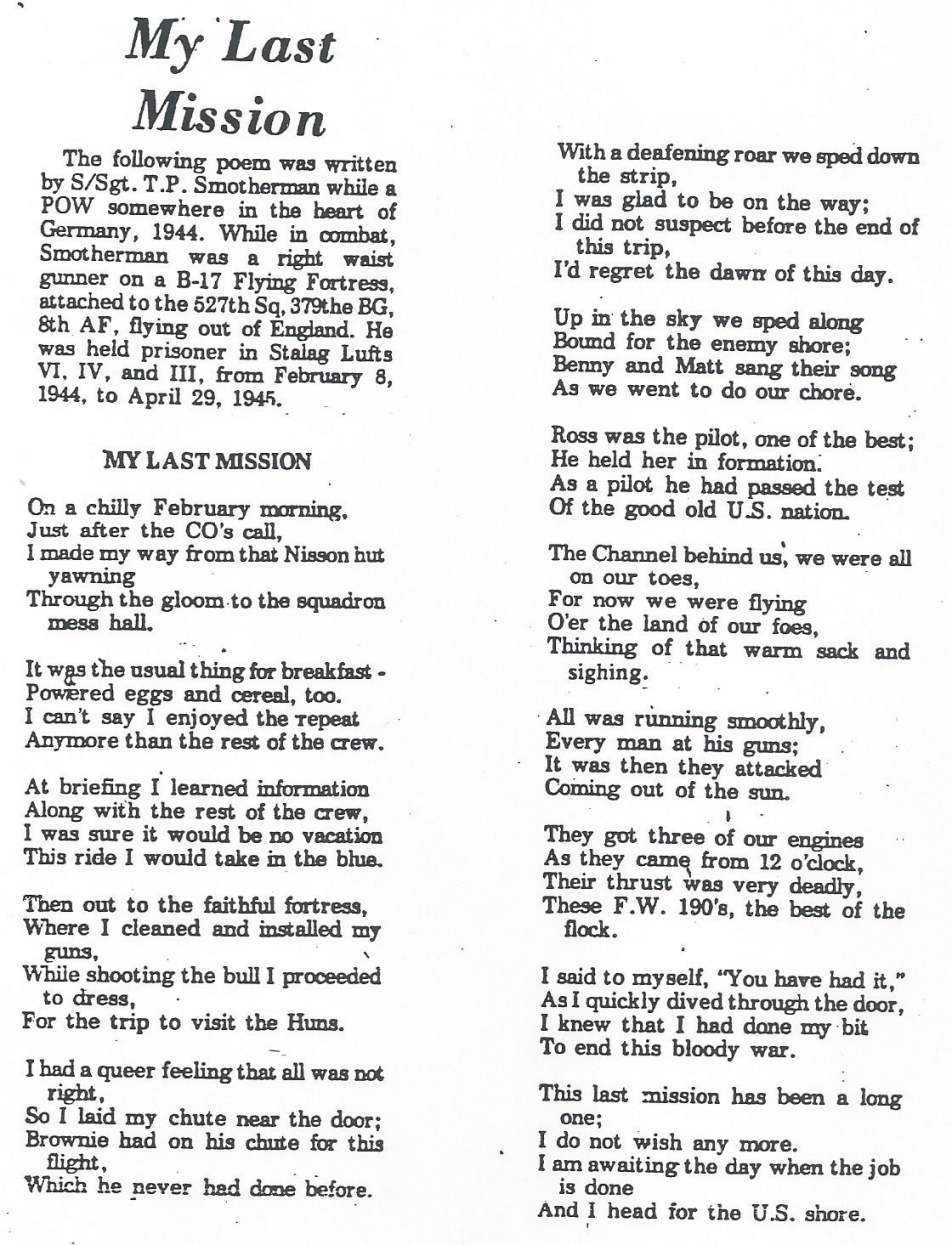
George Bennett wrote the following about Thurman: "Sergeant
Thurman P. Smotherman from Mountain View, Missouri, was the
right waist gunner. Smotherman was a quiet person. It was rare
for him to initiate a conversation or to suggest an activity.
Basically, he was just a good country boy and nice to be
around. My impression of him was that he just wanted to get
the war over and get home. Like the others, he was all
business when we were airborne. I always held Smotherman in a
special category because he may have save my life on our first
mission". This event refers to ice forming in the
oxygen line of George's mask on their first mission to
Wilhelmshaven. Thurman found him slumped and luckily
changed his mask rather than suing normal procedures which would
not have worked due to the ice formation.
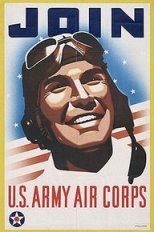
Sgt Frederick H BROWN Jr 31084894
Frederick H Brown was born in 1910 to Margaret and Frederick
Brown, in Pittsfield, Massachusetts. He was married in 1932 to
Elizabeth Rand and by 1940 they were living in Warren and had a
family of five and Frederick was employed as a construction
worker. His enlistment is recorded dated in September 1942. By
the time of his landing in Ireland another daughter had been
born. In his POW questionaire, he recalled helping Edward
Dugan to fit his parachute and helping him to bail out. Two sons
were born after the war, one of whom, James W Brown was killed
in action in 1968 in Vietnam. His daughter Sybil was
killed in a 1950 automobile accident. A further son Fred
died in 1979. Following a divorce, Frederick Brown moved
with his second wife to Deming, New Mexico and he died there in
February 1983, having ran a gas station and convenience store.
The crew arrived at the 379th Bomb Group without the aircraft that they brought across the Atlantic. They were a replacement crew having, it would appear, being posted overseas as a trained crew with the intention that they would ferry one aircraft overseas and then be assigned to whatever unit was next in need of a crew. As it turned out they were assigned to the 527th Bombardment Squadron (Heavy) of the 379th Bombardment Group (Heavy) based at Kimbolton in England.
The fate of the crew of 42-37985 turned out to be tragic, but what of the bomber they arrived in Ireland on on the 18th December 1943. 42-37985 was officially known as a Boeing B-17G-20-DL Flying Fortress. This airframe was one of 94 built by Douglas at their Long Beach plant. This was the distinctive G model of the well known Flying Fortress. Only nine days earlier and similar B-17G had crashed into a hill side in County Sligo killing three crew members, the story of that crash is told here on the website. The B-17G sub type was only in the process of being issued to combat units in England and the Mediterranean in late 1943. Among other improvements, the most noticeable new feature of the B-17G was the introduction of a defensive machine gun turret on the underside of the aircraft's nose, the remote controlled chin turret. The features of the B-17G can be seen in the photos below taken of the airworthy example, Sally B, photographed in 2010 at the RAF Museum, Duxford. Particular differences would be the tail gun turret on 42-37985 would have been of an earlier design than on the aircraft below and the aircraft would have been unlikely to have carried any individual letters or unit markings. These would have been applied upon arrival in the England when it was assigned to the 96th Bomb Group.
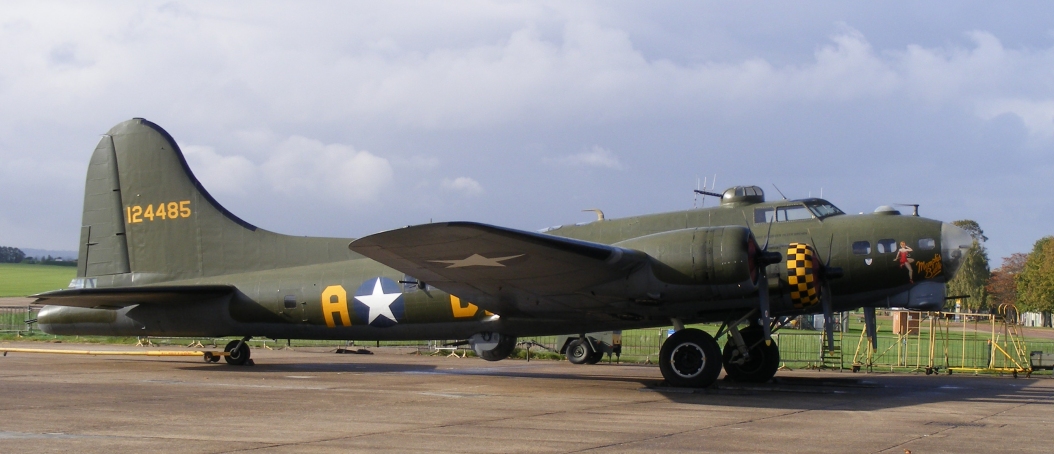
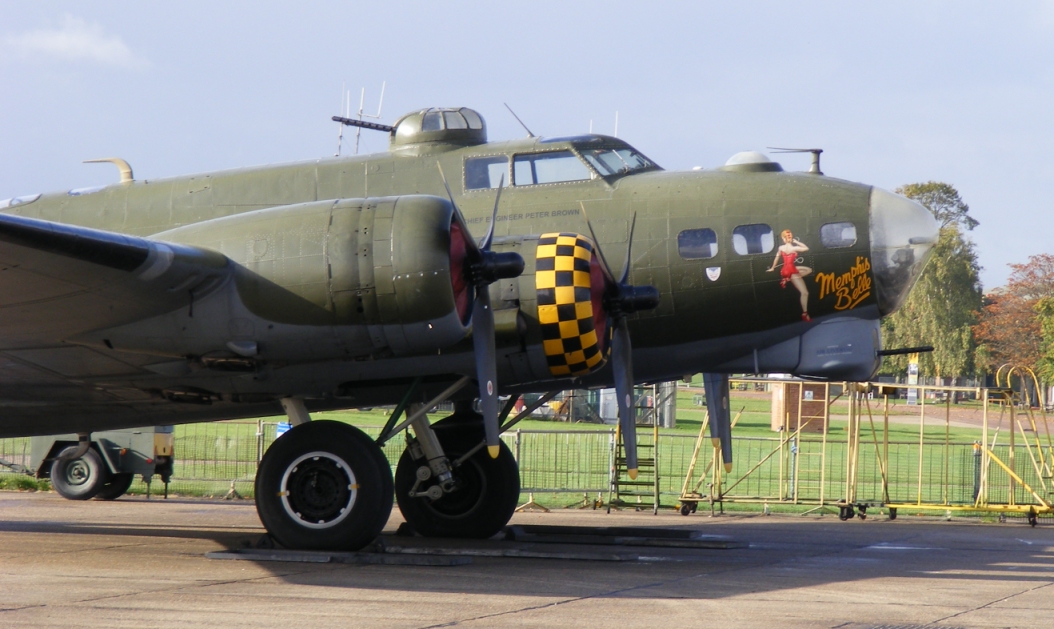
USAAF records contain a accident report for a B-17G carrying the serial number 42-37985 dated December 20th 1943. This report places this aircraft having been flown on a training mission to the the UK, and was returning to Maghaberry in Northern Ireland from Wharton when it nosed over on landing due to runway condition. It suffered extensive damage to the chin turret and nose section and was reported to be suitable for repair. All four propellors were also damaged in the incident. It is not known when the aircraft reached the 338th BS or if this report might have a typographical error in recording the serial number.
Aircraft 42-37985, after its punishing lay over in Ireland, was assigned to the 338th Bomb Squadron of the 96th Bomb Group based at Snetterton in England. With that unit it was given the nose art, The Saint, and flown in combat from the start of 1944 until 9th April 1944. During this time it had it copilot killed on the flight deck on 25th February 1944, when F/O Curtis C Mosier from New York. The aircraft contined to fly until the 9th of April 1944, when it was damaged on a mission to Warnemunde and the pilot was forced to land a Bultofla in Sweden. This time however, the neutral Swedes were not able to release the aircraft and she remained in Sweden until after hostilities has ceased. Her crew were allowed to return to England however and the pilot on that occasion was shot down again before the end of the war and taken prisoner.
The Citations and Awards presented to the family of Albert F Paplaskas after and during World War Two.
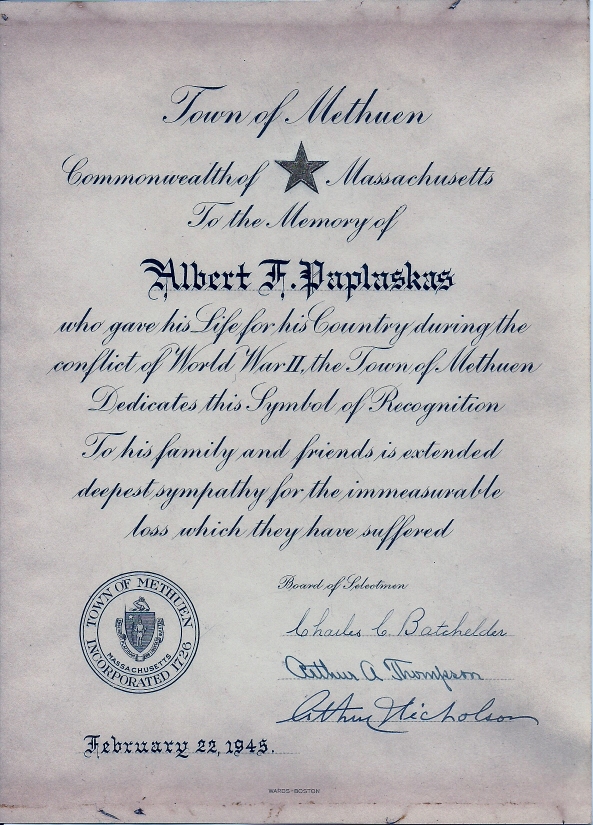
February 22nd, 1945: Town of Metheun, To the memory of Albert F Paplaskas who gave his life for his Country dyuring the conflict of World War II the Town of Methuen Dedicates this Symbol of Recognition. To his family and friends is extended deepest sympathy for the immeasureable loss which they have suffered.
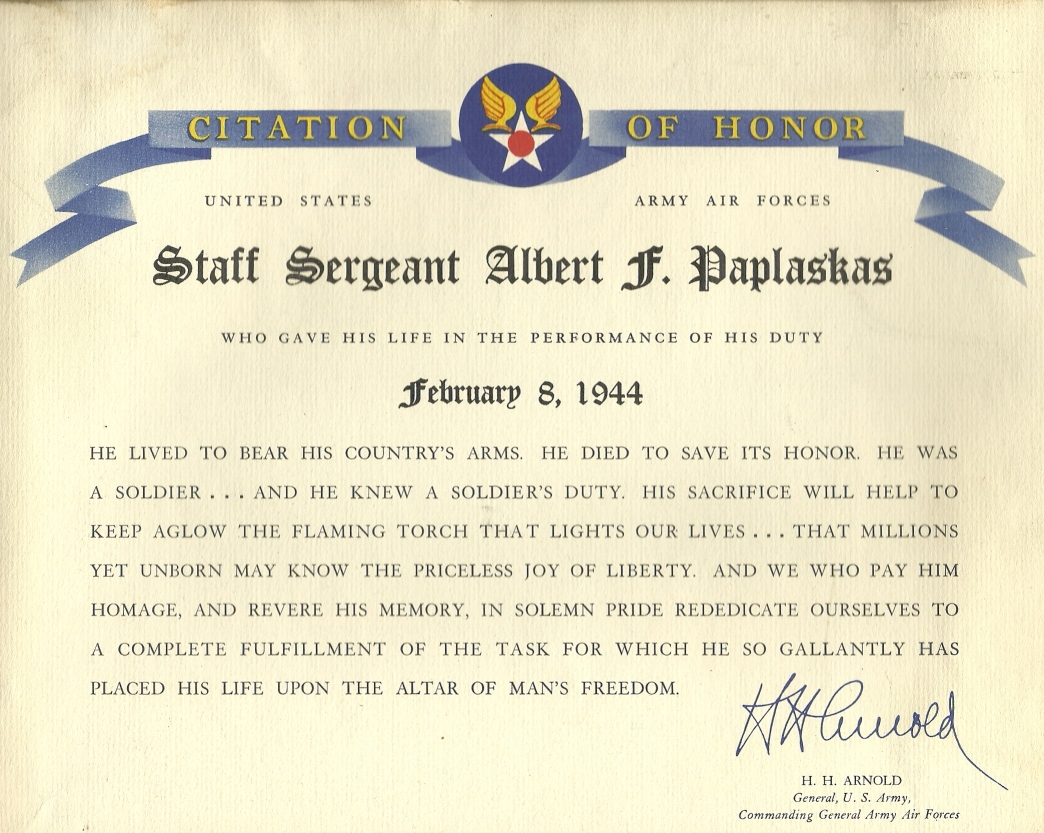
Citation of Honour from the USAAF.

Diocese of Boston Testimonial of Merit
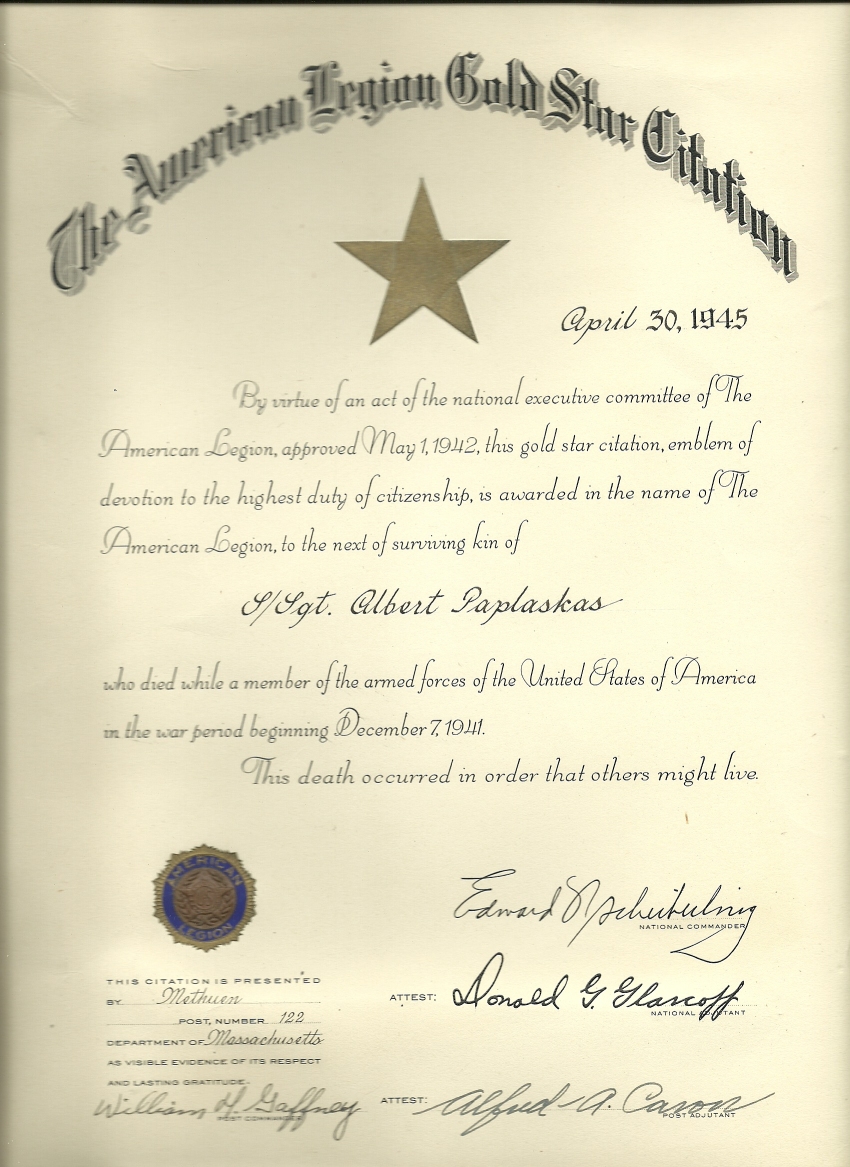
American Legion Goold Star Citation
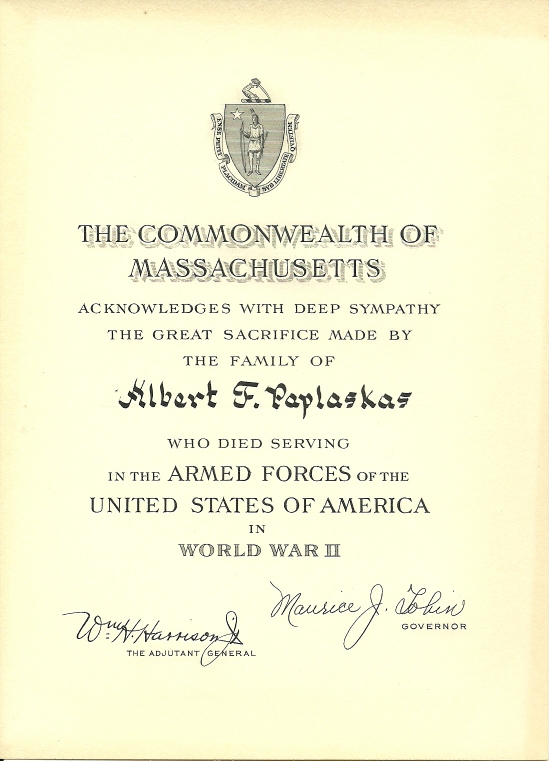
Massachutsetes State Citation.
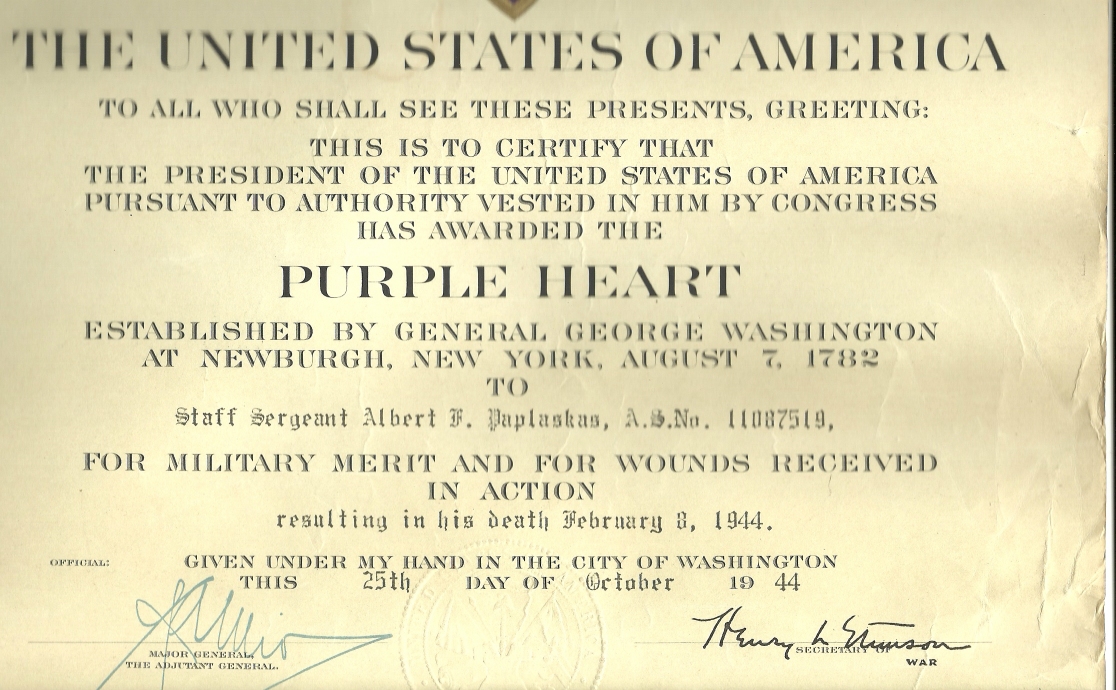
Purple Heart Award certicate (Part of)
Compiled in 2016 by Dennis Burke with the kind assistance of the families of A Paplaskas, H D Rossberg, J A Kupsick, M J Bauer plus materials sourced via Ancestry.com and newspapers.com.
